Power Clean vs Deadlift: A Complete Guide
Author:
Reviewed by:
(21 years of Oly Lifting experience)
Unlock your full potential by engaging with our experts and community! Have questions about your fitness journey or looking for expert advice on weightlifting techniques? Don’t hesitate — leave a comment below and Jacek Szymanowski will provide a personalized answer and insights to help you reach your goals.
Torokhtiy is reader-supported. Some links are affiliate links, and we may earn a commission at no extra cost to you. See our disclosure page for details.
The power clean vs deadlift debate is a hot and divisive one. In this article, we compare these two incredible exercises. We explore the major differences between them, and discuss their pros and cons so you know exactly which one is best for you.
So which one is better for you? Which of them will help you achieve those lofty fitness goals? Let’s find out!
Power cleans are awesome if you’re involved in a sport that requires speed. They focus on training you to be fast and precise despite the weight. Deadlifts are your go-to if you’re after raw strength and power. You train your body to stay in control while lifting heavy weights.
Now let’s get into the thick of it. To really get the gist of it, we need to start at the beginning.
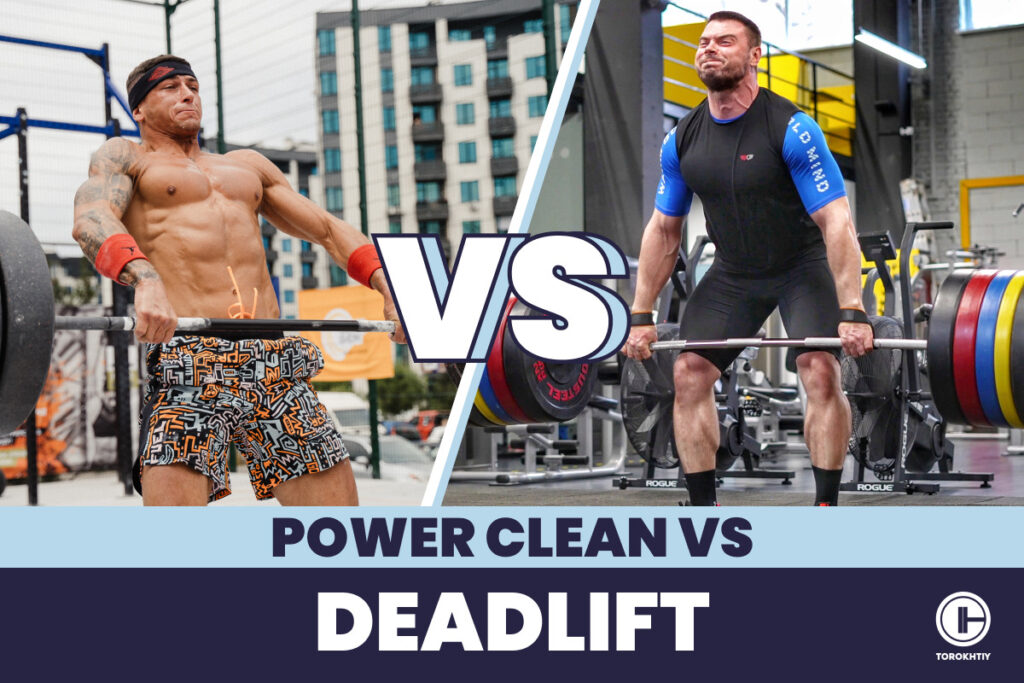
What Is A Power Clean?
A power clean is a full body movement that targets muscles from your upper back all the way to your feet. The power clean is an Olympic weightlifting auxiliary exercise that will enhance not only muscle strength, but power too.
Power Clean is an olympic lift which requires lifting bar from the floor, up to your shoulders in one smooth and explosive motion.
Power clean is almost like normal olympic clean with the difference that you catch the bar in a half, not deep squat.
The power clean starts with the lifter standing over the bar with feet shoulder-width apart. Bend at the hips and knees to grab the barbell with an overhand grip, keeping your back straight and chest up. Lift the bar from the ground by extending your hips and knees and pull the bar close to your body (this is the first pull).
As the bar reaches your thighs, explosively extend your hips and knees to create upward momentum (the second pull) Quickly shrug your shoulders and pull yourself under the bar, catching it in a front squat position with the bar resting on your shoulders and elbows pointing forward. Stand up to complete the lift. Lower the bar on the ground and repeat.
The power clean builds athleticism by making you lift heavy weights and move them as fast as possible with controlled precision.
Sounds impressive, I know, but let’s look at some pros and cons.
Pros And Cons Of Power Cleans
Positives:
Could be better:
How to Do a Power Clean?
It’s advisable to get professional help from a coach, but if there’s none, these are the basic steps:
- Starting Position: Place the bar on the floor and stand with feet shoulder-width apart, toes under the bar. Grab the bar with an hook grip. Lower your hips, arch your chest, and engage your core
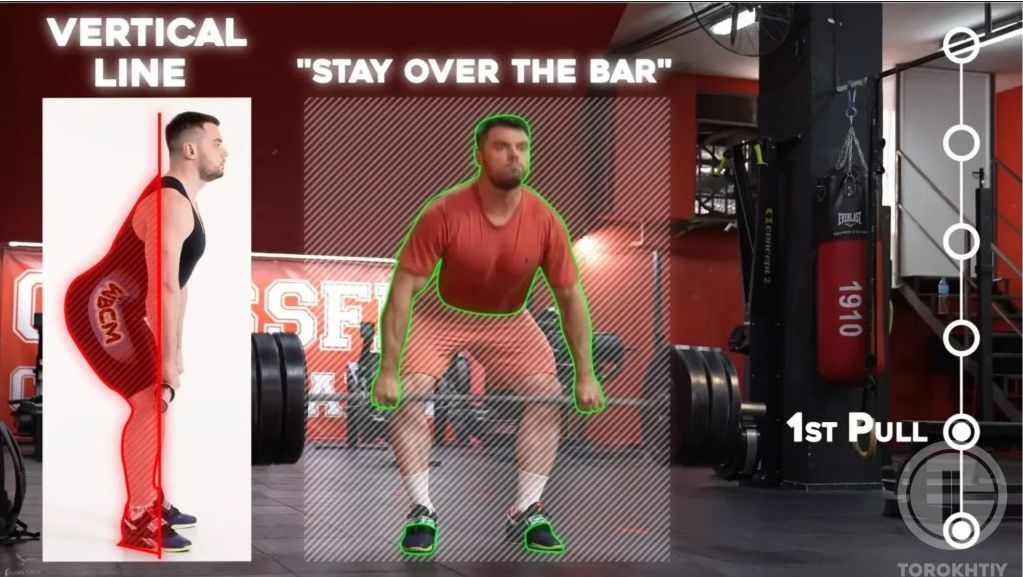
- First Pull: Lift the bar close to your body, keeping your arms straight, and maintain balance by pushing against the platform.
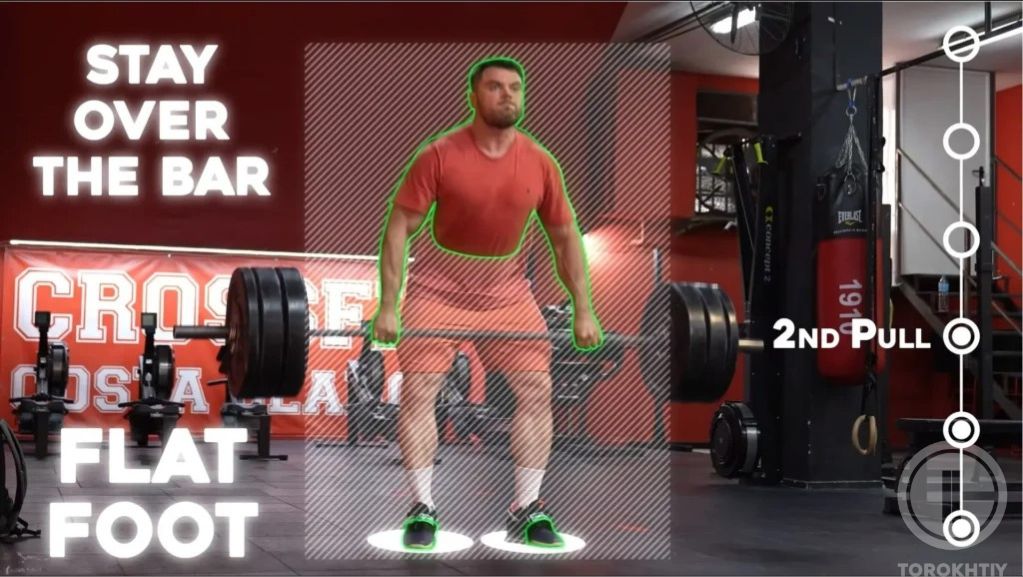
- Second Pull: As the bar reaches your thighs, explosively extend your hips, knees, and ankles to generate upward momentum.
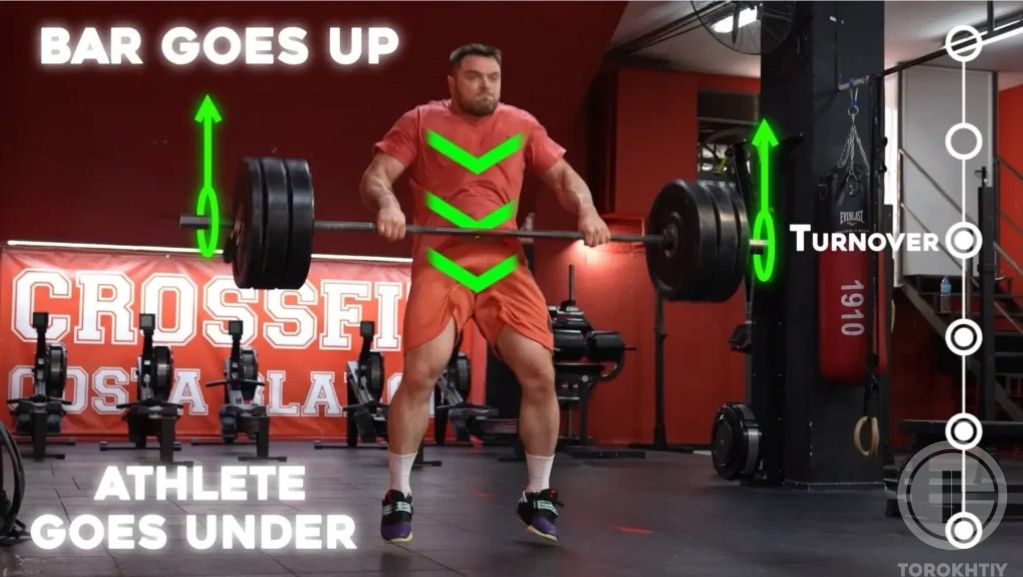
- Turnover and Catch: Quickly move under the bar, catching it on your shoulders with elbows high. Catch the bar in a half squat.
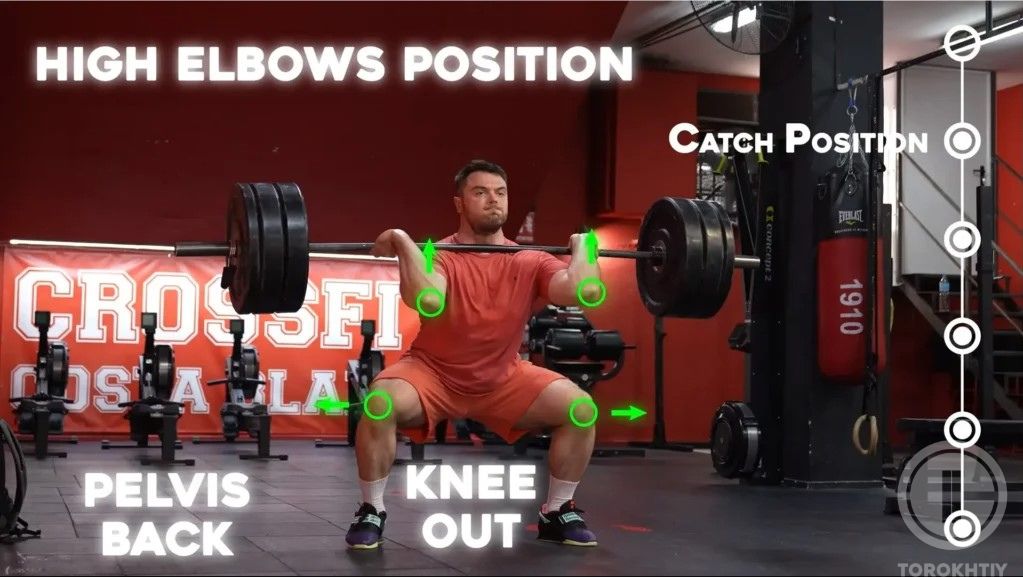
- Recovery: Stand up straight, then lower the bar back to the floor and repeat.
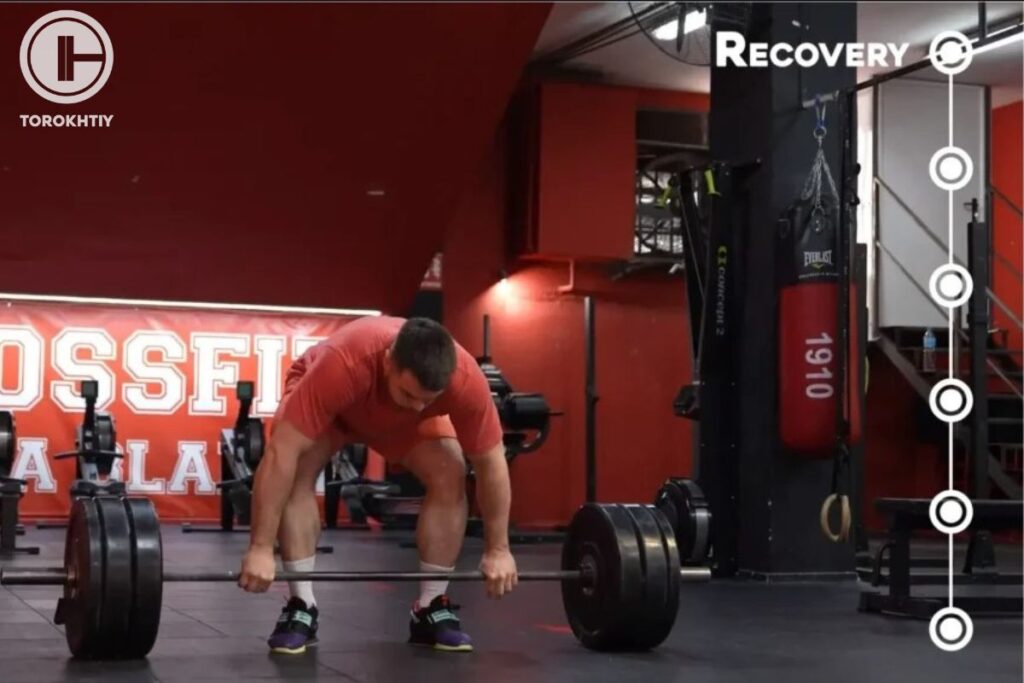
What Is a Deadlift?
Like the power clean, the deadlift is a full body exercise that targets muscles from your back down to your legs. Because it allows you to lift heavier weights, it won’t be as fast as Power Clean but will definitely build absolute strength. The deadlift builds the purest, raw muscle power. It’s also one of the best strength-training exercises for overall strength.
The deadlift starts with a loaded barbell at rest on the floor. Stand with your feet hip-width apart, toes under the bar. Bend at the hips and knees, keeping your back straight and chest up, to grab the bar with an overhand grip, hands just outside your knees. Engage your core and extend your hips to lift the bar, keeping it close to your body.
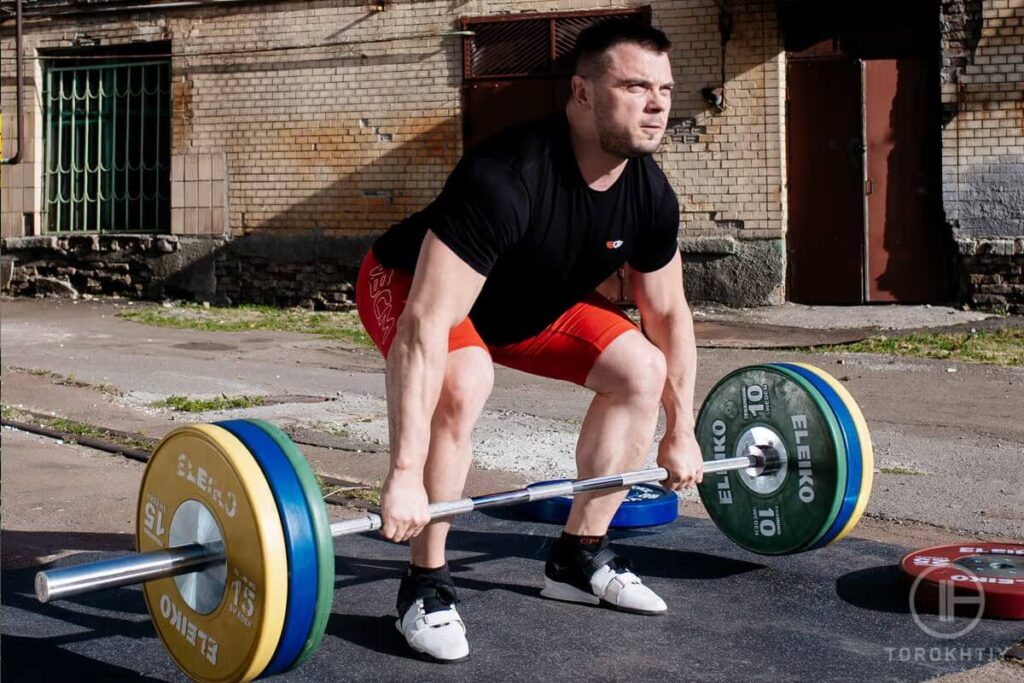
Rise until you’re standing upright with the barbell in your outstretched arms, shoulders back, and hips fully extended. Then, slowly lower the bar by pushing your hips back, bending your knees, and keeping your back straight until the bar returns to the floor.
The deadlift demands you lift the heaviest of weights and return them to the floor, all while maintaining perfect control. It can be an excellent tool for building strength, power and muscle mass.
Don’t put your money on a winner for our deadlift vs power clean debate yet. Here are some pros and cons…
Pros And Cons Of The Deadlift
Positives:
Could be better:
How To Do A Deadlift?
A deadlift is nowhere near as complex as a power clean. That said, you could hurt yourself if you get it wrong. Here are the basic steps:
- Place your legs underneath barbell. Barbell should more or less “cut” your feet in a half.
- Brace your core and engage your lats to maintain a straight back. Bend over and grip the barbell tightly. Arch your hips backwards until you feel some tension in your hamstring.
- Use the momentum from your feet and hips to pull the barbell up slowly, keeping it close to your body.
- Continue pulling until you’re standing upright with your arms outstretched, locking the bar without overextending your back.
- Slowly lower the barbell back to its original position by pushing your hips back and bending your knees, maintaining a straight bar path.
- Rinse and repeat.
Deadlift vs Power Clean: Head to Head
A deadlift vs power clean head to head comparison will help bring out exactly what both drills offer you. They’re both incredible drills, but which one is for you?
1. Complexity
Let’s start here. If you don’t know how to do a deadlift, you have no business with a power clean. Deadlifts are easier to learn and form the first phase of power cleans. Start there.
If you’re looking to try something new, power cleans just might be for you. You don’t need to be a pro to start, and although professional help can be beneficial, you can also learn on your own. Power cleans are an excellent exercise with a steep learning curve, but the benefits make it worth the effort.
Deadlifts take this category because they’re so much easier to do.
2. Muscle And Strength Building
Deadlifts make you lift heavier weights slowly and in total control. This builds your muscle mass and raw absolute strength power more than power cleans. Power cleans make you create explosive movement while lifting heavy weights. This builds your muscle for powerful acceleration and athleticism.
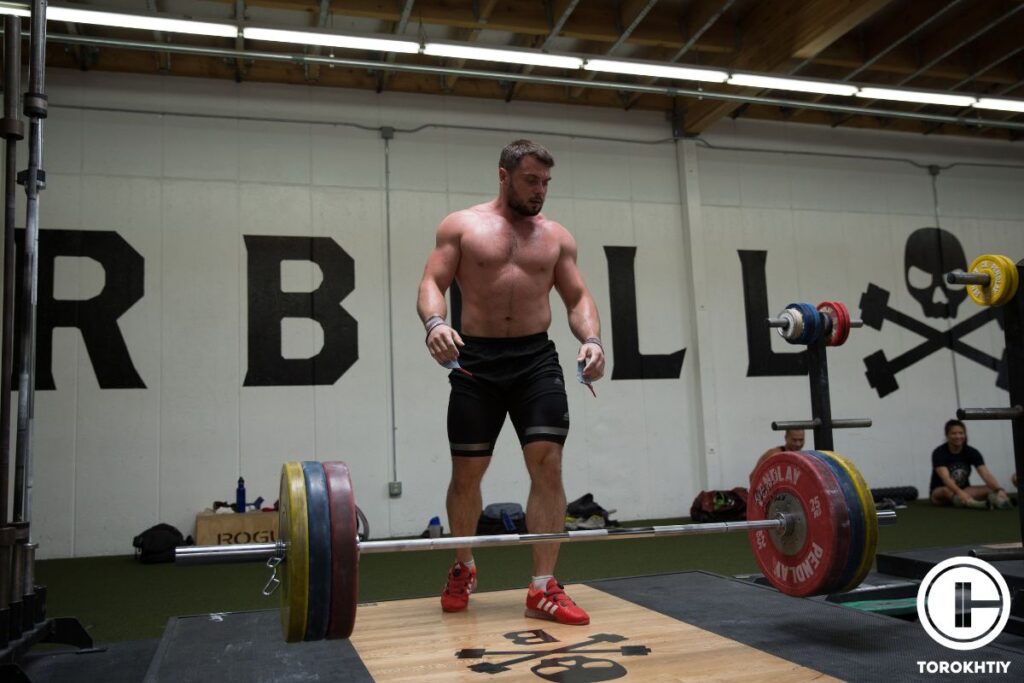
If you want to improve your explosive strength, power cleans will do a better job; but deadlifts are unrivaled for building bigger muscles and more strength. Deadlifts take this one.
3. Athleticism
Both power cleans and deadlifts improve athleticism, but power cleans excel in improving coordination, balance, force absorption, and mobility. They’re particularly effective for athletes looking to boost speed, throwing distance, and shot power.
Deadlifts are also beneficial for strength and power, with even some studies suggesting both exercises can improve speed and jumping ability similarly, with no significant difference in jumping performance between the two.
Follow us!

Free!
Get a 2-week Weightlifting Program as a bonus for the subscription to kickstart your training plan!

Free!
4. Safety
Both drills are quite safe when done properly. Once mastered, you can practice either drill without needing a rack or a spotter.
That said, power cleans are more technical and complex than deadlifts so there’s a slightly higher chance of injury or muscle strain. On the other hand, deadlifts will allow you to lift heavier weights, so there’s less room for error. In terms of the risk of injury, it’s a tie between these two.
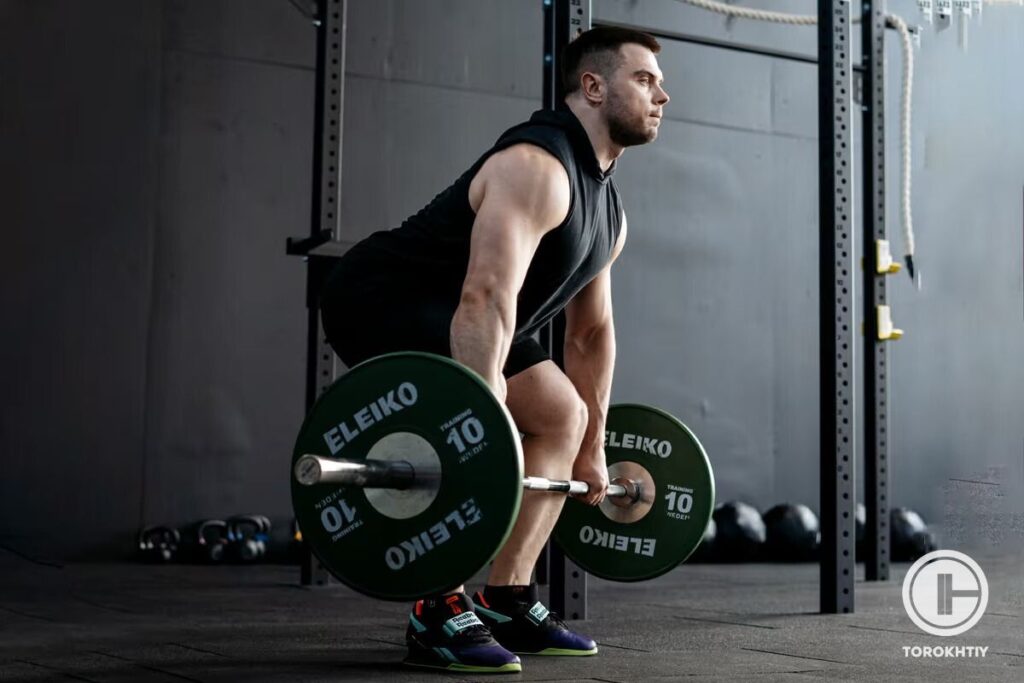
5. Muscle Control
Deadlifts focus on maintaining muscle tension and controlling the movement throughout the lift, so it’s effective for increasing time under tension and controlling the eccentric part.
Power cleans, on the other hand, involve transition periods and phases of force production and absorption, challenging your balance and coordination,
Each exercise demands different adaptations: deadlift for constant control and muscle tension, and power cleans for dynamic control and coordination. Considering this, it’s a tie in terms of degree of control each exercise provides.
FAQ
Do Power Cleans Help Deadlift?
Improving power output and rate of forced development through power cleans can be a great tool for enhancing deadlift performance. The explosive nature of power cleans helps develop muscle coordination, speed, and dynamic strength, which can contribute to better deadlift capabilities.
Yes, power cleans can help with deadlifts.
Are Power Cleans Good for Powerlifters?
Powerlifters usually stick to clean pulls because they’re more directly relevant to their specific training goals. Deadlifts, squats, and bench presses are still their core lifts, but incorporating power cleans can still provide benefits.
Are Power Cleans Better Than Deadlifts?
Power cleans are excellent for building explosive strength and improving athleticism, which is great for sports like basketball, football, and combat sports. They involve phases of force production and absorption, so they challenge balance and coordination.
Deadlifts, on the other hand, focus on maintaining muscle tension and controlling the movement throughout, which is ideal for building raw strength and muscle mass.
They have different demands and adaptations. To get the best of both worlds, do both exercises.
Conclusion
There are no definite answers to debates like deadlift vs power clean or hang clean vs deadlift. Each has unique benefits tailored to different goals, but basically, it’s best to do both so you get all the benefits.
Power cleans are excellent for building explosive power, coordination, and athleticism, so they’re excellent for sports. Deadlifts will improve your raw strength, muscle mass, and controlled movements, enhancing overall muscle tension and TUT. If you want to max out your strength, power, and athletic performance in general, then there’s really no choosing between the two.
Now it’s your turn! Are you team deadlift or power clean? What are your fitness goals with either one? Did I miss anything important? Talk to me in the comments!
Also read:
References:
- Exercise and Weight Loss // Healthline: https://www.healthline.com/health/exercise-and-weight-loss
- Deadlift // Torokhtiy: https://torokhtiy.com/pages/deadlift-2
- Photos by Torokhtiy Media Team.
Why Trust Us?
With over 20 years in Olympic weightlifting, strength training, nutrition coaching, and general fitness our team does its best to provide the audience with ultimate support and meet the needs and requirements of advanced athletes and professional lifters, as well as people who strive to open new opportunities and develop their physical capabilities with us.
By trusting the recommendations of our certified experts in coaching, nutrition, and sports training programming, as well as scientific consultants, and physiotherapists, we provide you with thorough, well-considered, and scientifically proven content. All the information given in the articles concerning workout programming, separate exercises, and athletic performance, in general, is based on verified data.
The product testing process is described in more detail here.
Author: Jacek Szymanowski
Certified Nutritionist,
M.Sc.Eng. Biotechnology
Performance Architect,
Strength and Conditioning Specialist
With over 30 years of fighting experience, specialization in nutrition coaching for athletes, and expertise in metabolic health and dietary strategies, Jacek offers a comprehensive approach to optimizing your performance and well-being. Backed by a Master of Science degree in Biotechnology, Jacek remains at the forefront of scientific advancements, ensuring that his coaching is always evidence-based and up-to-date.
Reviewed by: Oleksiy Torokhtiy
Olympic Weightlifting Champion, PhD in Sport Science
Best Results: Snatch – 200 kg,
C&J – 240 kg
Oleksiy Torokhtiy is a professional athlete boasting 20 years of experience in Olympic weightlifting. With multiple European and World titles under his belt, he has showcased his prowess in two Olympic Games (Beijing 2008 and London 2012). Upon concluding his illustrious career, Oleksiy dedicated himself to coaching. By 2022, he had conducted over 200 weightlifting seminars worldwide. He is the visionary behind an international sportswear and accessories brand known for its motto, “Warm Body Cold Mind.” Additionally, he is an esteemed author and the creator of a series of training programs and eBooks.




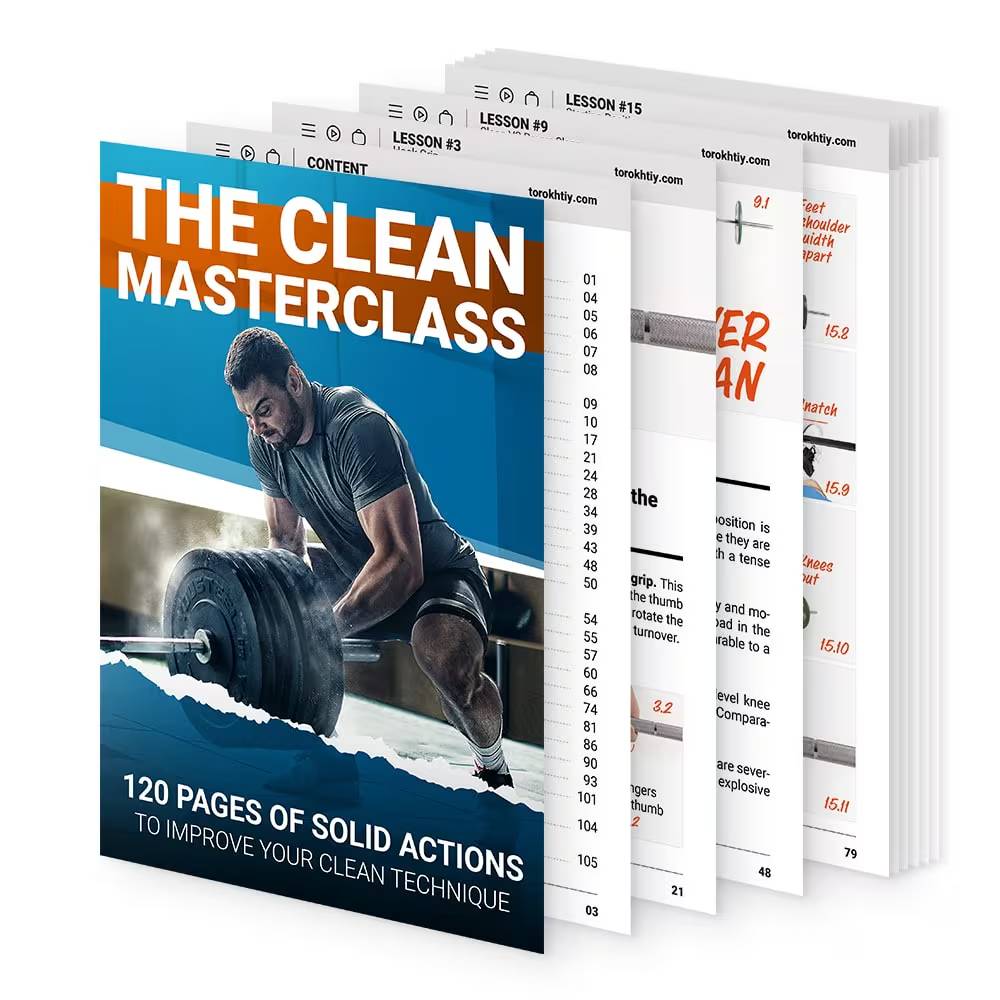
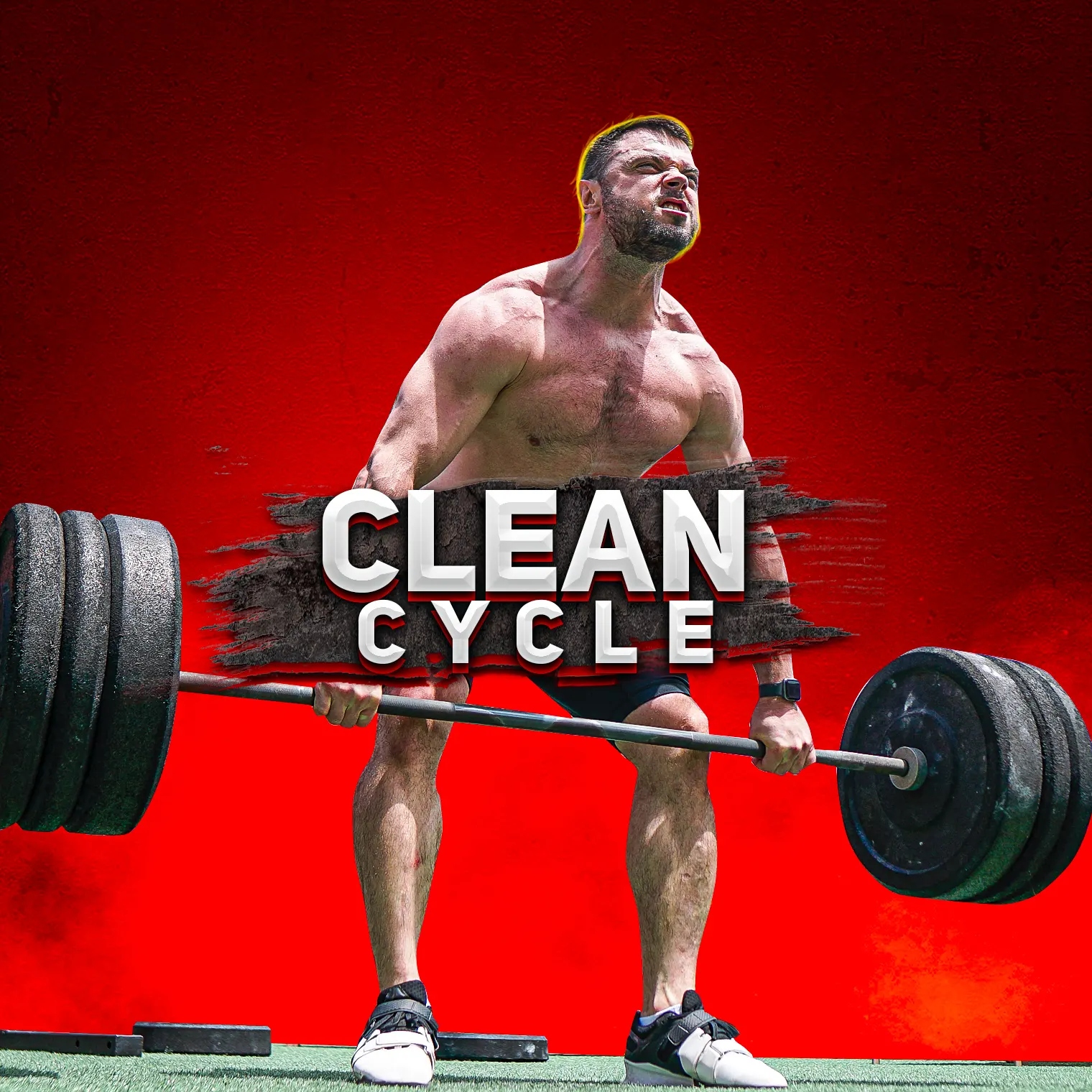
Still have questions after reading our article? Unlock your full potential by engaging with our experts and community! Don’t hesitate — leave a comment below and Jacek Szymanowski will provide a personalized answer and insights to help you reach your goals.